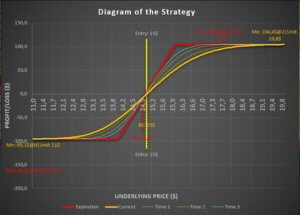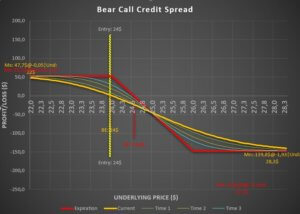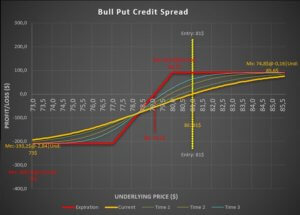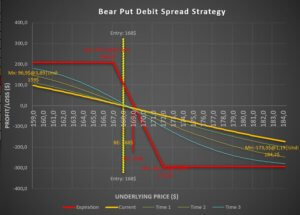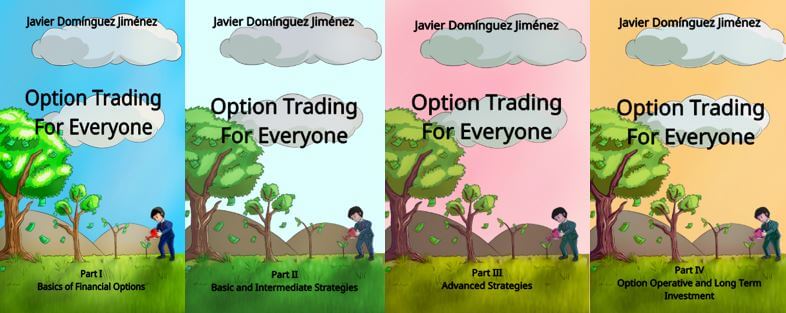The 4 Main Spread Option Trading Strategies
In the option market, one of the most important and versatile is known as the spread options strategies.
In this section, you will find everything you need to know about the spread option strategies, how they are formed, what types are available and how they can be set up to take the best from them.
What is the Spread Option Strategy?
Let us first begin with the basic question. What is the spread option strategy?
A spread is an intermediate options strategy that requires to simultaneously buy and sell two call or put option contracts of different strike prices.
If those contracts have the same expiration date, we will say we have a vertical spread. However, if the expiration dates are different, we are talking about a calendar spread.
Depending on the relative positions between the strike price and the underlying, and depending if we are using call or put options, we will be albe to create four different spread option strategy variants. Each of these behave differently, and a have different name.
We can easily create any of the option spread strategies we want using our advanced options spread calculator excel.
Do you need a Calculator that helps you create and analyze any option strategy in record time? |
Let us take a look at every single spread option trading strategy:
Spread Option Strategy Types
Bull call spread
This option spread is created by selling a call option at a certain strike price at the same time that we are buying another call option with a lower strike price… Read more
Bear call spread
The bear call spread is the opposite if the bull call spread. We can create this strategy by selling a call option at a certain strike price, while, simultaneously buying another call option with a higher strike price… Read more
Bull put spread
This spread is created by selling a put option contract whose strike price is higher than another put option contract that we will need to buy… Read more
Bear put spread
This spread is the opposite of the bullish put spread. It is created by selling a put option contract whose strike price is lower than another put option contract that we will need to buy… Read more
The volatility skew
One thing that the four option spreads have in common is the use of the volatility skew to favor the strategy.
As you know, the implied volatility is a parameter that we must always take into account when trading options, but even more when dealing with an option spread strategy.
In every option spread, we will need to simultaneously buy and sell options, we should look for those assets whose volatility skew favor our position. We can easily see this information in our broker, and we should be looking for a curve just like this one here:
In the previous image, you can see an example of one of the volatility curves for Wynn Resorts, which is currently trading at $111.63 per share.
This particular shape of the implied volatility curve is known as the volatility skew.
The volatility skew represents the different values of implied volatility for each of the different strike prices that are available. If we want to execute an option spread, we should be aware of the shape of the implied volatility curve to help us obtain better results in the strategy.
Example of volatility skew
For example, we are going to open a bearish call spread.
It is best to sell an option with a higher strike price, such as the $105 strike price. At the same time, we should buy another option with a lower implied volatility, such as the $110 strike price.
This difference in implied volatility from one strike to another will result in a better profit to the spread strategy, since we have sold a higher extrinsic value and bought a contract with a lower extrinsic value, both at the same expiration dates.
The volatility skew will provide us with an extremely beneficial effect when trading this strategy, so the most desirable thing to do is always look for those companies that offer a good volatility curve.
You can learn more about the implied volatility by clicking on the link. You will find more information about how implied volatility works or how it is measured through the greek vega.
